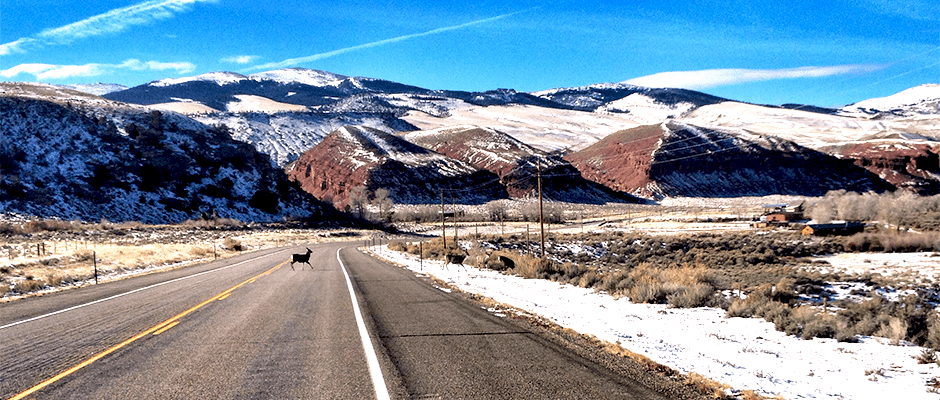Share this article
WSB: White canvas bags keep deer off roads
When biologists in Wyoming wanted to test how effective wildlife warning reflectors were at discouraging deer from entering the roadway, they figured they’d wrap up some of them to keep the deer from seeing them. As it turned out, the white canvas bags they used were more visible to the deer than the Swarovski crystal reflectors, and they did a better job of reducing vehicle collisions.
“We were covering reflectors to stop them from reflecting,” said Corinna Riginos, lead author on the study published in Wildlife Society Bulletin. “It was serendipity that the white bags themselves would be more visible and have more effect on deer.”
The large, rectangular reflectors, which line several central Wyoming roadways, are designed to cast headlights at angles off one another and create a zigzag pattern to deter mule deer (Odocoileus hemionus) from crossing. The state Department of Transportation tasked Riginos, currently a conservation scientist with The Nature Conservancy, with determining how well they worked.
In 2013 and 2014, she and her collaborators conducted an experiment using thermal video cameras and carcass counts to assess deer crossings and deaths on 10 miles of road with reflectors. They compared the results between alternating one-mile stretches where they’d concealed the reflectors with white canvas bags or left the reflectors exposed. The results surprised them.
“The white bags were 33 percent more effective than reflectors in terms of reducing the number of animals hit,” Riginos said. “The white bags also were more effective in modifying deer behavior, so deer were less likely to run in front of a car as the car approached.”
The bags, she said, appeared more conspicuous and reflective than the reflectors themselves.
“It may be that the white bags look like a white rump patch, which deer exhibit as an alarm sign to each other, so it’s possible they saw these bags as a warning they could understand,” Riginos said, but “it’s possible it was the novelty of it they were reacting to.”
Past research has produced conflicting conclusions regarding the usefulness of reflectors, she said, but recent trials attaching white reflector tags to fences have reportedly inhibited birds and deer from running into roads.
“Scientists have come up short in finding evidence that you can modify deer road crossing behavior by visual warning devices,” Riginos said. “This study indicates there is still scope to study visual behavior modifiers to get deer across roads more safely, especially where it’s not feasible to do the more effective gold-standard strategies — an underpass or overpass for wildlife. They’re expensive, and in this area, they wouldn’t be possible because of topography.”
Riginos said she would like to see a longer-term investigation featuring more durable white panels to check whether white cues remain a reliable means of curbing deer mortality on roads over multiple years.
TWS members can log into Your Membership to read this paper in the Wildlife Society Bulletin. Go to Publications and then Wildlife Society Bulletin.
Header Image: A deer crosses a road in Wyoming. ©Teton Science Schools








